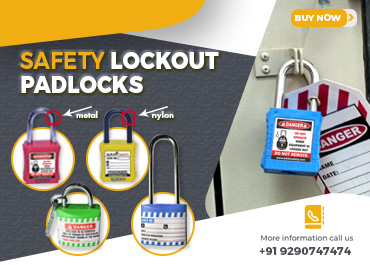Even if the safety of your employees and customers are an absolute top priority, your business may still be at risk in the event of an accident or workplace injury. That’s why it’s so important to have a lockout/tagout (loto) system in place that can protect you from being exposed to financial liability or even personal liability in the event of an injury on your property. Read on to learn more about how this can help you, as well as some tips for implementing one in your business or workplace!
What is a Lockout/Tagout system?
A lockout and tagout system is an important safety measure for preventing workplace injuries. It helps to remove or isolate the hazard before the worker can be removed from the area. In other words, it is used to stop dangerous equipment from operating while someone is working on it. So, if you’re not familiar with lockout and tagout systems, this blog post should help you learn more about them.
Why is it important to install one at your office?
Lockouts and tagouts are often overlooked, but are extremely important for the safety of your employees. Without these systems, it is possible for employees to injure themselves and others or even to cause an explosion by starting up equipment without first locking out any energy sources that might pose a danger.
How does the LOTO safety equipment work?
A lockout-tagout (LOTO) system is an important safety protocol that prevents injury. An LOTO system is used to lock out equipment before it can be serviced, and to tag it back in when the job is done so that nobody starts using the device while it’s being repaired.
What are its precautions and operating procedure?
A lockout/tagout system is defined as an industrial process control device which is used to isolate and secure hazardous energy sources during maintenance and servicing. LOTO systems are categorized by the type of isolation they provide. Lock out systems ensure that no energy can be released from the device or machinery, whereas tag out systems only disconnect electrical power to the machinery or device. A lockout system can be manually activated, automatically activated by sensing equipment (e.g., pressure switches), or remotely activated (e.g., by radio). A tagout system can also be manually, remotely, or automatically activated.
How much time do I have to switch my machine off?
A lockout or tagout system is a device used to lock out an energized source, such as an electric current, before the source is disconnected and the worker leaves the area. A LOTO system can be any locking device that prevents energy from being released when it’s not supposed to be. There are two types of lockout devices: pressure locks and magnetic locks. Magnetic locks are typically used on overhead lines and equipment that uses high voltage circuits with alternating current (AC) power sources, while pressure locks are typically used for low voltage circuits with direct current (DC) power sources.
What happens if there’s an emergency during working hours?
An emergency during working hours can be extremely dangerous, especially if there is no safety protocol in place. If an employee enters the hazardous area without following the correct procedure, they may not know what to do if something goes wrong. In addition to not knowing how to react, they might also have been exposed to harmful substances.
Can I replace this LOTO device with any other locking device?
A lockout system is a critical part of any safety protocol. While there are many options for locking devices, the lukkosafety LOTO device is both cost-effective and easy to use. The LOTO device can be used as either a lock-in or as a lock-out device. For example, if you are changing out equipment, you may want to lock the old equipment out so that it cannot be activated while someone is using it.


